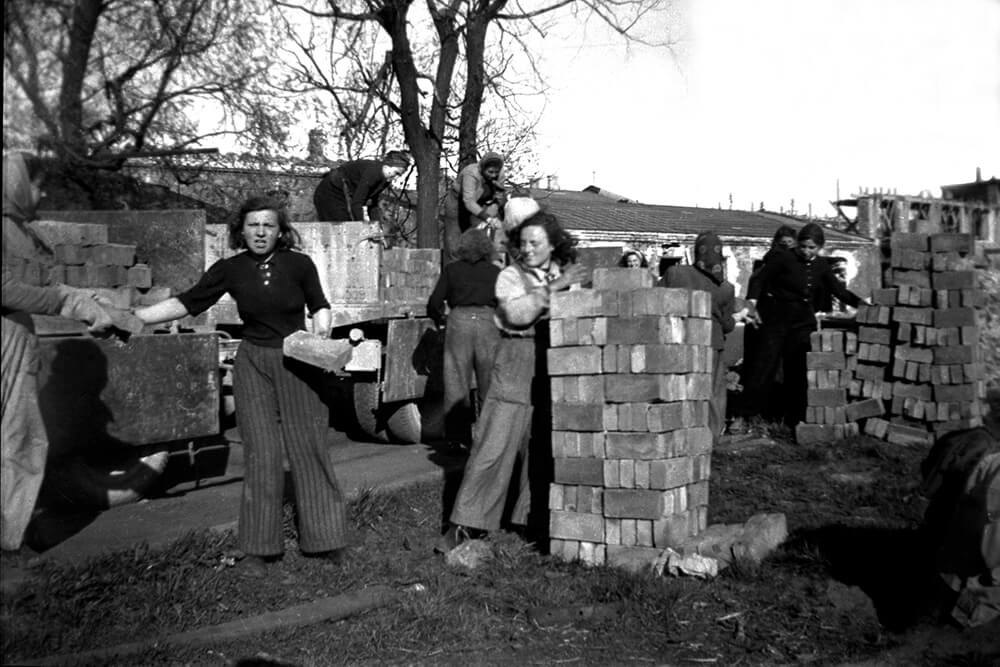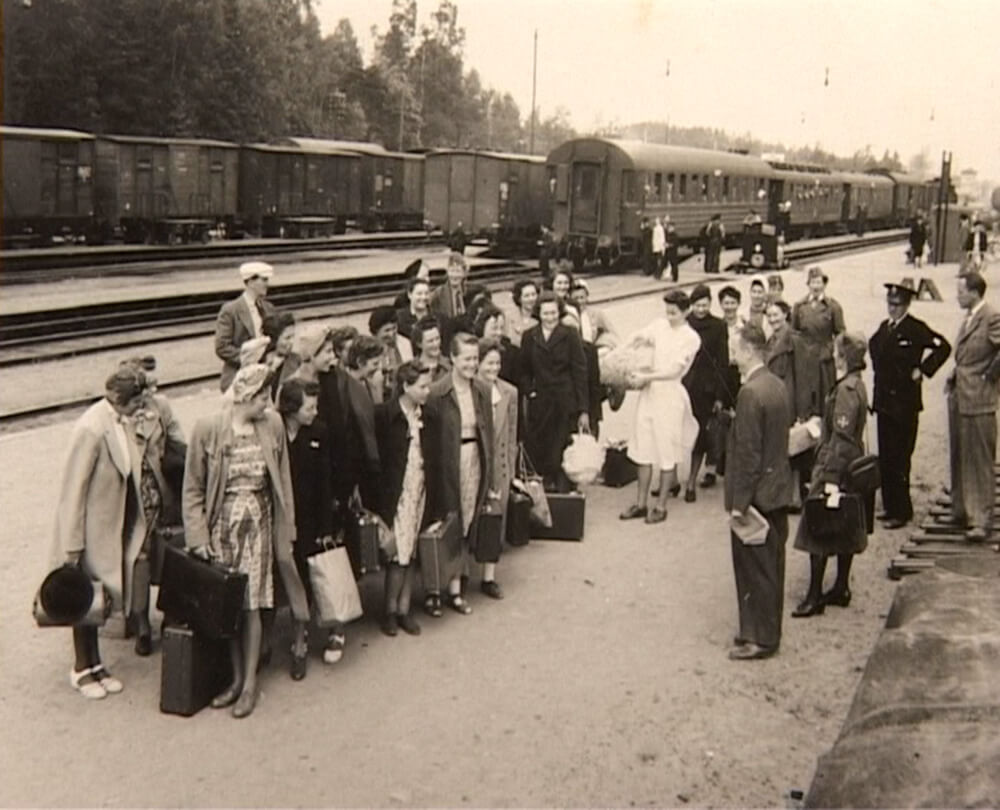Estonia

Czech female prisoners from Transport Be at work in Tallin/Reval, 1943.
Private Collection of Horst LuftschitzThere is no information about what happened to the prisoners on Transport Bb, which was dispatched from the Terezín ghetto on 20 August 1942. The destination of the train is not known. We can only assume that most of the prisoners were murdered immediately upon arrival. On 1 September 1942, 1,001 prisoners were deported on Transport Be from Terezín. Due to overcrowding in the Riga ghetto, this transport was sent on to Estonia, where it ended up in the small station of Raasiku-Jägala. The deportees got off the train with the assurance that they were being sent to work. They were then divided into groups and loaded onto several buses. After a short drive, most of the buses came to a stop at the Kalevi-Liiva sand dunes. The prisoners were taken out, ordered to undress, and forced to hand over their remaining valuables. They were then all shot into mass graves. Only about 200 young people were sent to the concentration camp at Jägala. Female prisoners were put to work sorting the clothes of those who had been murdered. Some recognized the garments of family members but refused to believe they were dead. In December 1942 a group of female prisoners were sent off to work in Tallin/Reval. Some of them were deported to the concentration camp in Ereda. Men from the Jägala camp were later sent to work in the camp at Tartu/Dorpat. Female prisoners were sent to various concentration and labour camps. Some were transferred from Stutthof to the Neuengamme satellite camp in Ochsenzoll. Shortly before the end of the war, the Red Cross evacuated some female prisoners via Denmark to Sweden. Survivors of Bergen-Belsen were liberated by the British army on 15 April 1945. Of the Czech Jews deported to Estonia, only 48 young women survived.
